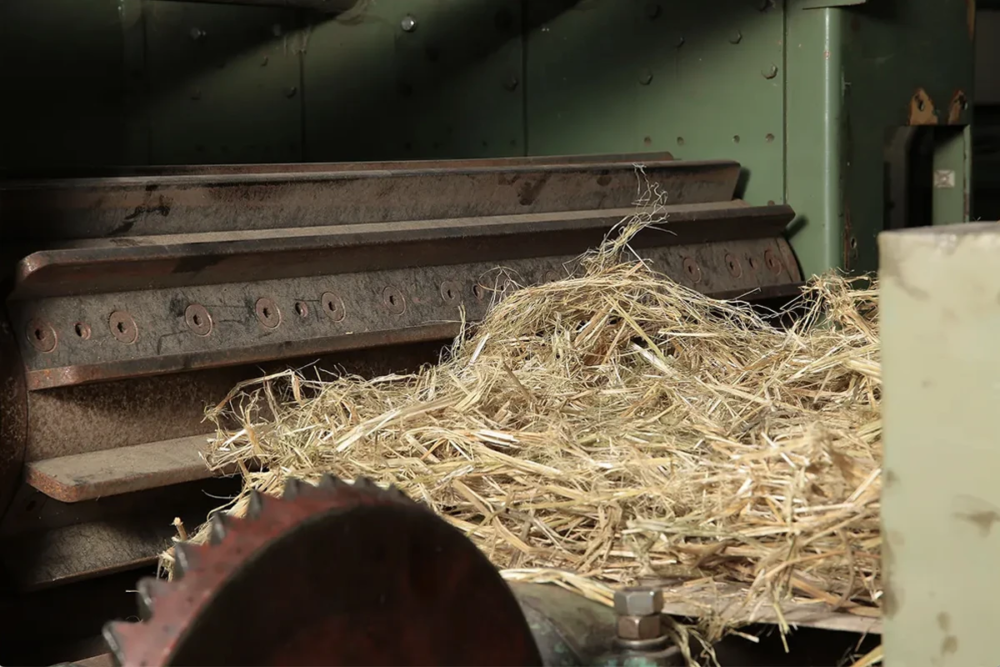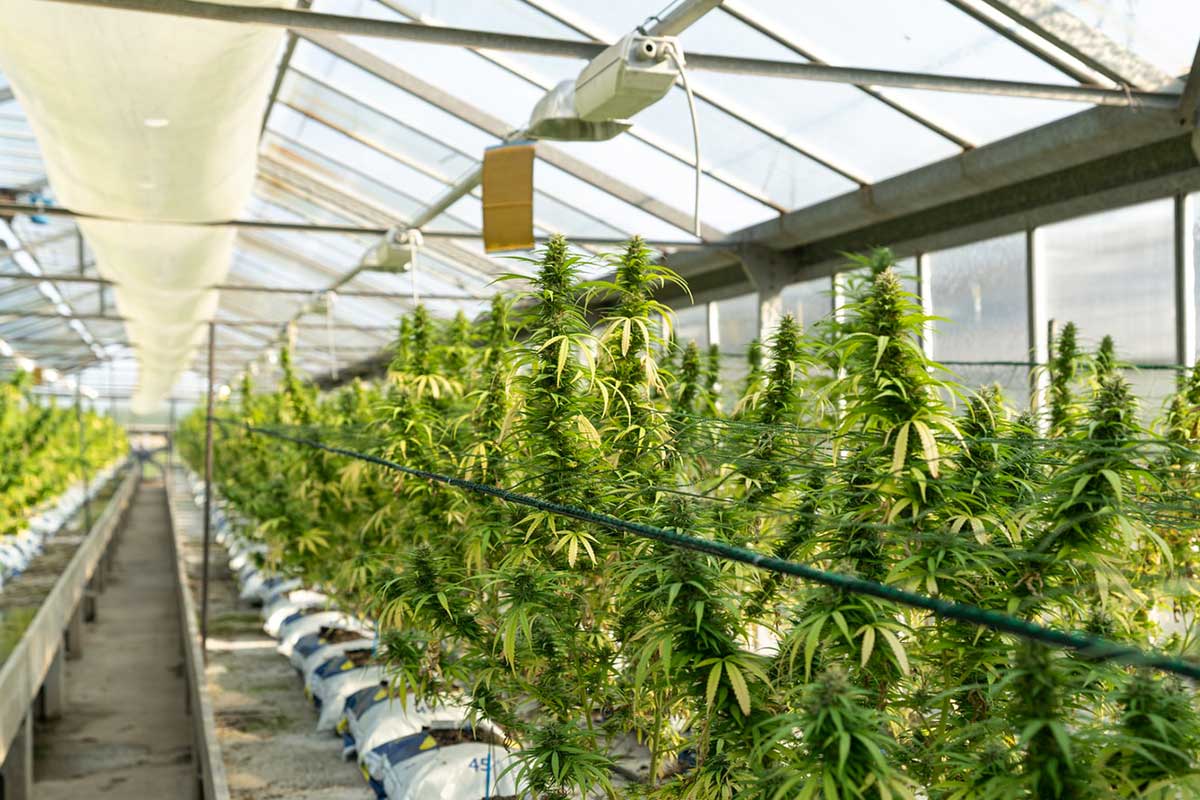
Hempcrete: the only building material which can sequester CO2
How hemp can become the game changer in the construction and building industry – a look into hempcrete and what it means for future structures
What is hempcrete and why it matters in sustainable construction
Hempcrete, a term derived from ‘hemp’ and ‘concrete’, is a plant-based building material made from hemp hurd, lime and water. The stalk of hemp consists of two main fiber components: the outer layer is the bast fiber which is used for textiles.
The inner core is generally considered as waste and known as the hurd. It can be described as woody and it’s what is used as the main ingredient in hempcrete. Lime is the natural glue which helps to gather it into an efficient insulator. Although hempcrete can be made into structural building blocks to construct with, the traditional term refers to its abilities as an insulator.
How is hempcrete used in modern construction and insulation methods
Executive director of the NHA (National Hemp Association), Erica Stark, explains: “It is not structural in of itself unless you buy prefabricated blocks that have an infrastructure built into it. These prefabricated blocks have a bioplastic structure built-in which makes it look like a lego and allows them to be stacked.”
The most common ways in which hempcrete is used within a structure is either when it is “retrofitted with hemp insulation” in an existing structure or by “building a wooden frame with a board that holds it together and the hempcrete is packed in.” Hempcrete as insulation or as building blocks are essentially the same; the only difference lies in the prefabrication in which an internal structure is built into the block to give it support.
Environmental benefits of using hempcrete for green building projects
Advocates for hemp focus on communicating the multiple benefits it has surrounding the environment and sustainability. Hempcrete works in parallel with this conviction: “It can regulate temperature and humidity, reducing fossil fuel inputs into heating and cooling a home or structure. It is a great insulator but at the same time it is breathable so you have superior indoor air quality. A lot of modern homes are well insulated with insulation products such as fiberglass but the indoor air quality suffers because it lacks that movement of air. It‘s also mold, mildew and pest resistant.”
It is around eight times lighter than concrete, a factor which in itself contains other benefits. It takes less energy to transport which further reduces emissions and carbon footprint. The building of a structure using such a lightweight material eliminates the necessity of large construction machines and heavy-lifting equipment, another element which reduces pollution.
How hempcrete contributes to carbon sequestration and climate solutions
“For all of our technology and advancements in industrial processes, sometimes simpler is better. Going back to things that were proven in the past actually still do make sense in the modern world,” Stark puts together. One of its more prominent benefits is the level of carbon dioxide that it absorbs. Throughout its lifespan, hemp sequesters carbon dioxide on various levels.
One hectare of industrial hemp can seize around fifteen tons of CO2. “Not only does hempcrete have the benefit of having a much smaller footprint than traditional concrete, it also continues to sequester CO2 for up to one hundred years. You get the benefits on the cultivation side because hemp sequesters more CO2 than any other commercial crop. Then you have the reduced carbon footprint of the production of hempcrete itself and the actual use of it during the building process. Then there is the additional benefit of the continued sequestration of CO2 as a building material.”
Lime extraction and the carbon footprint of the hempcrete binder
One of the less eco-friendly steps in the production process of hempcrete is the extraction of the binding material. “There is a carbon footprint in drawing and extracting lime. There are some binders which are portland cement.” Studies though have shown that the overall benefits of hempcrete not only offset the issues regarding the carbon footprint in extracting the binder, “it exceeds it by a lot. You still end up with a carbon neutral or carbon negative structure.”
Its sustainable qualities and potential to overflow markets creates a “notion that behemoth industries would push back and lobby against us but I haven’t seen that happen in the real world,” explains Stark. Although no large-scale opposition has emerged, local pushbacks and slow regulatory processes still delay broader adoption.
Traditional construction techniques using hempcrete and timber frames
“When we talk about hemp, we don’t talk about disrupting or replacing existing industries. We talk about making existing products better, stronger and more sustainable.” The extent in which it could affect such large-scale market shares is limited.
The traditional method of using hempcrete — compacting it between panels and using timber frames as structural support — means that it wouldn’t hurt industries such as that of wood. The most it could do, given its main use as an insulator, would be affecting fiberglass industries.
Given the trajectory in which more eco-friendly and sustainable choices are being made, not much needs to be done for these industries to adopt the hemp bast fiber as a material to proceed in the production of insulation.
Why hempcrete remains relatively unknown despite ancient origins
There are different hemp structures which date back to Roman times. A mortar bridge in France, which dates back to the 6th century, was constructed using hemp and still remains standing. Although this technology is ancient, the R&D of hemp as a building material is relatively new.
Although hemp was federally legalized in the US in 2018, the industry is still rebuilding the infrastructure needed for widespread adoption. “The only recourse to use it was to import the raw material from Europe or other countries where it was legal and that was cost prohibitive. It is still the case now because, although it’s federally legal, we’re still lacking the infrastructure in the US to produce it on an enough commercial scale to bring the price down to be comparable to existing building products.”
The evolving status of building codes and hempcrete regulation in the US
“We know it’s safe. It’s rather the bureaucratic hassle to go through the process of getting local code inspectors who have not seen hempcrete before to understand what it is and to buy into, allowing you to use it.” Until recently, there was a lack of universal building codes surrounding hempcrete production.
However, progress is underway. In 2022, ASTM International published the first standard for hempcrete insulation (ASTM D8280-21), and in 2023, the International Code Council approved its inclusion in the 2024 International Residential Code. “The standards will make it a commonly accepted material where architects and code inspectors will know what they’re looking at and can simply rubber stamp it as opposed to educating themselves as to what it is and how it’s used.”
Comparing hempcrete with concrete in terms of cost and competitiveness
There is still a gap in costs between hempcrete and traditional concrete, but it is gradually narrowing thanks to advancements in prefabrication, regional supply chains, and growing demand. “While the market could bear the cost, to make it commercially viable at scale, it has to be more aligned than it is right now.”
“The lack of standards and the lack of infrastructure to make it cost competitive is why we’re not seeing it more widely adopted. As the standards are being developed and we get commercial scale processing so it can be domestically grown to further reduce the price and carbon footprint of construction, hempcrete will come around.”
Prefab hempcrete blocks vs. onsite installation: curing time and transport
“The difference between using prefabricated blocks and doing it on the construction site with the framing and packing in, is in the cure time on the job site and the transportation cost. To ship prefabricated blocks requires more transportation costs than mixing it and packing it directly onsite. The downside of doing it onsite, is you need to let it cure for a significant amount of time before you can put the exterior cladding on the structure. Prefabricated blocks are already cured and it makes assembling them onsite quicker.”
R&D is currently focusing on creating entire panels — rather than blocks — which are pre-cured to minimize time in construction. While infrastructure has grown in recent years, most current decortication facilities still operate at a scale that falls short of industrial demand. “The most hemp a decortication facility can process is around five tons an hour, which is a drop in the bucket compared to where we need to go.”
Building regional infrastructure to support cost-effective hempcrete use
To reduce the environmental and financial cost of transporting heavy prefabricated blocks, regional decortication and panel manufacturing facilities should be located close to growing areas. “Ideally within fifty miles of where the hemp is being grown to keep it more cost effective and reduce transportation.”
The future of hempcrete: a realistic path toward large-scale adoption
Given the sheer amount of sustainable qualities that hemp has, it could become a staple in the future for several industries. This brings around an issue surrounding the cultivation and how much land is needed. According to Stark, there is a simple solution which would disrupt current cultivating practices less than completely adding hemp as a new crop.
“We’d need to convert about five percent of the current acreage in the US that is currently in corn and soy. Adding hemp into the rotation, rather than replacing corn and soy, would equal eight million acres in the US without disrupting the existing corn and soy industry.” The corn industry is being heavily subsidized by the government, an element which would be fruitful for the hemp industry.
Hempcrete as a commercially available construction material still needs to go through steps to ensure standards and competitiveness in the market. Its potential and versatility can result in incomparable innovations across many industries though, including that of construction.
About the National Hemp Association and its mission for hemp’s future
The mission of the National Hemp Association is to support the growth and development of all aspects of the industrial hemp industry. The infrastructure to support their goals is minimal which is why they aim to educate, collaborate and build communities to spread awareness of the benefits of hemp. They represent hemp farmers, manufacturers, processors and start-ups.







